Three remarkable ramen shops in Spain, according our traveling Japanese reporter
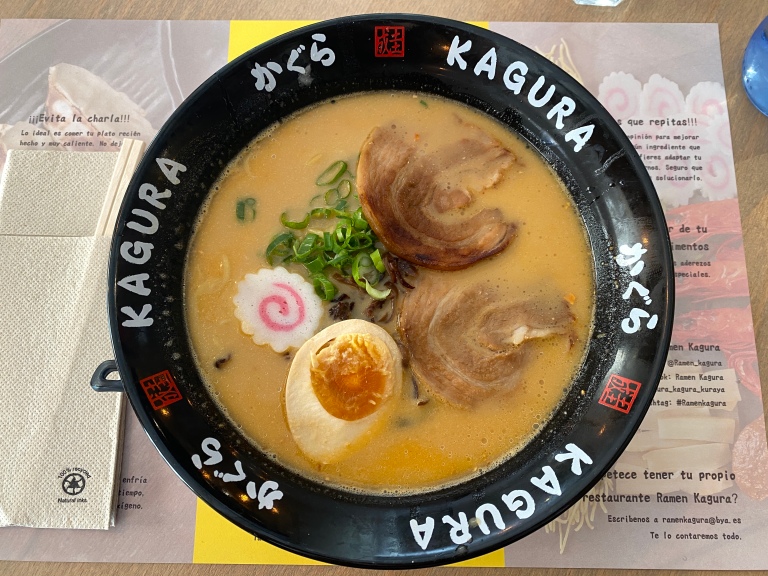
Ikuna has tried tons of Japanese restaurants in Spain…but these all stood out for very different reasons.
Our world-traveling, Japanese-language reporter Ikuna Kamezawa is at it again. She got her vaccine and her vaccine passport and followed all of the recommended and required precautionary measures, and has now been in Spain for about a month.
Being away from home so long, her family and friends inevitably ask her, “Don’t you miss Japanese food?” But in Spain, the answer is actually, “Not at all.” That’s because the big cities in Spain are chock full of sushi and ramen restaurants.
Since Ikuna has been in Spain for a while now, she’s walked all over Barcelona and Madrid and tried all kinds of restaurants…and found three particularly remarkable ramen restaurants that she wanted to share with you.
1. Ramen Shifu in Barcelona
Ramen Shifu is actually a ramen restaurant chain that has shops in Madrid as well as Barcelona. It’s a pretty popular place that can have lines out the door on busy days.
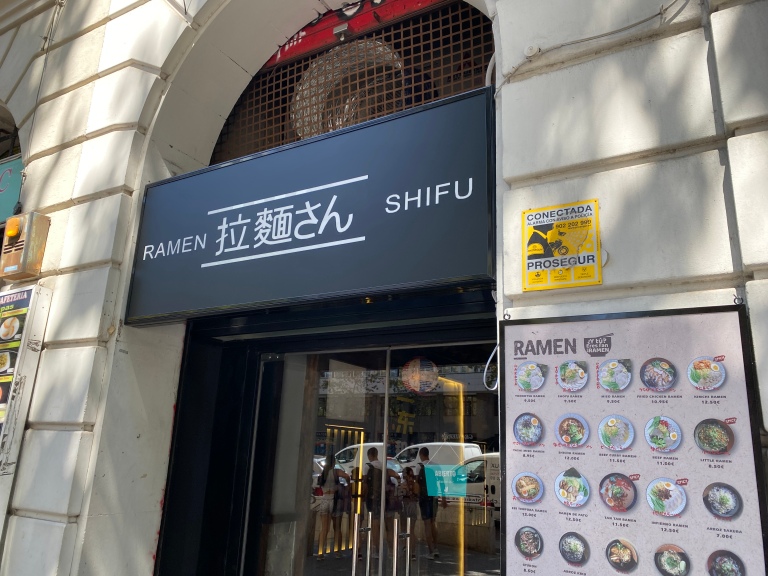
The first thing that caught Ikuna’s eye at the Barcelona restaurant–besides the sign outside that said “Ramen-san” in Japanese–was the little sign inside that said, “Omoide Yokocho” on it. It looked just like the sign leading into Memory Lane, the small, iconic alley of food stalls in Shinjuku!
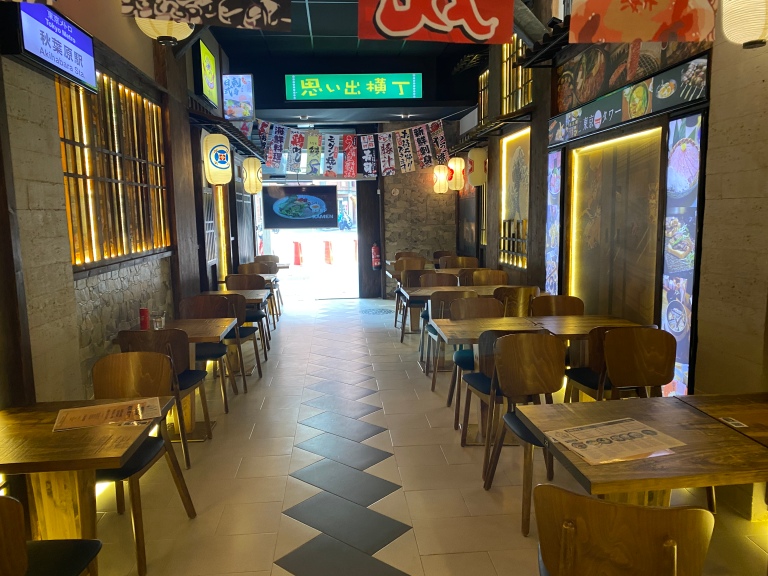
There was a neat array of noren banners hanging across the space, advertising eel, okonomiyaki, sashimi, and torimeshi (chicken and rice), although the restaurant didn’t actually serve any of those things.
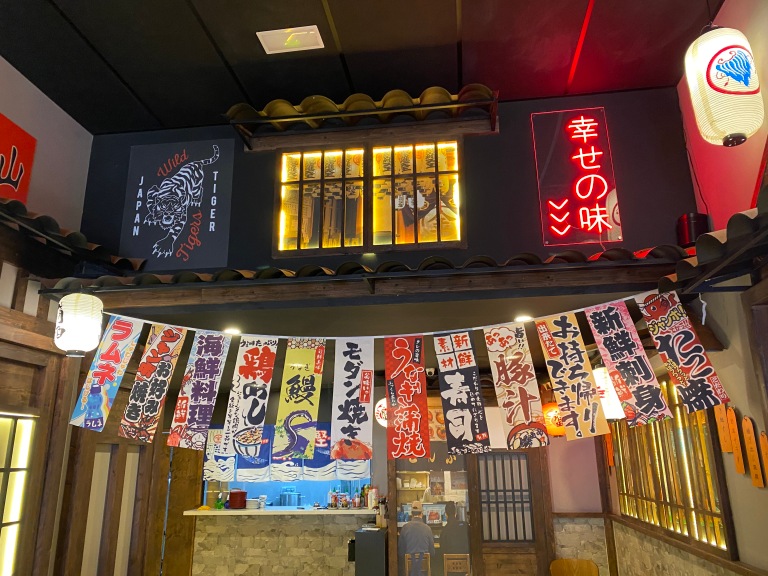
There were lots of little touches reminiscent of life in Japan, like the “Manga Cafe 1B” sign that looks like it was taken directly off of the side of a building.
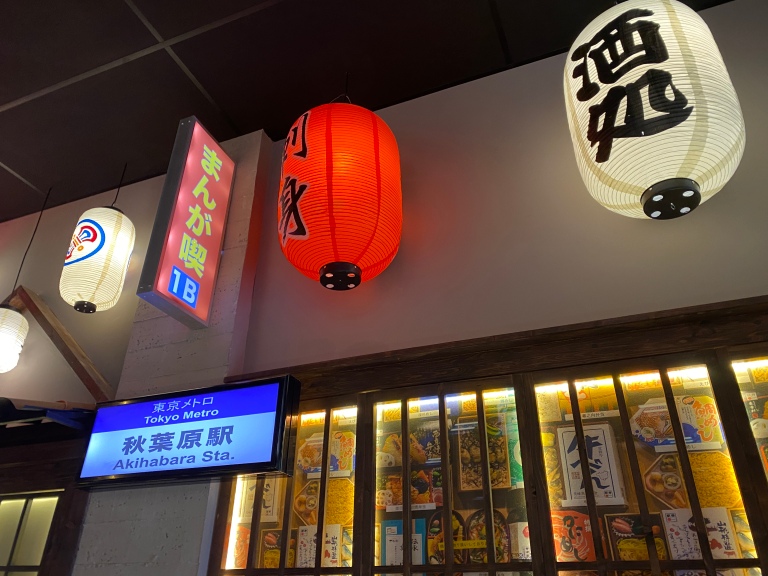
They even had a sign for “Muryou Annaijo”, which literally translates to “free guidance center”, but the guidance provided at these centers in Japan is related to local hostess bars, erotic massage parlors, and other businesses in the fuzoku (adult entertainment) industry. Ikuna had to wonder if they knew what that sign was for when they put it up.
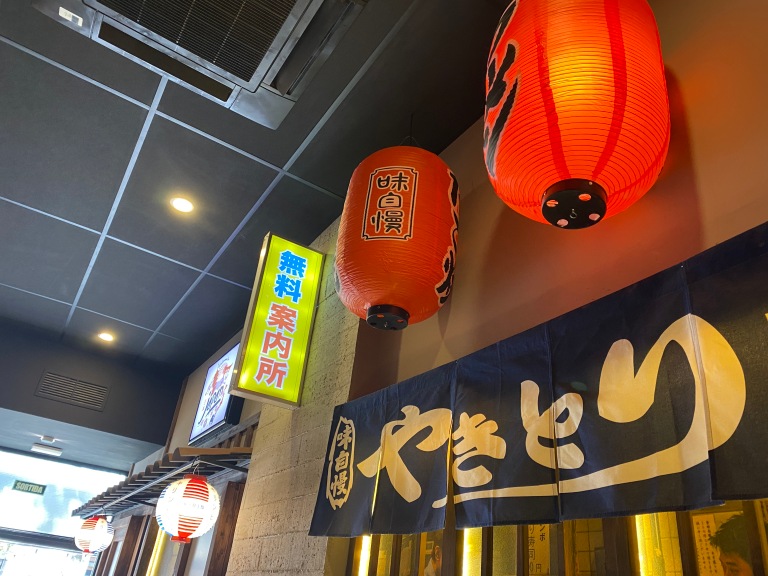
A wallpapered wall featuring a menu of tasty looking bento offerings made Ikuna hungry, though they didn’t actually serve any of those items.
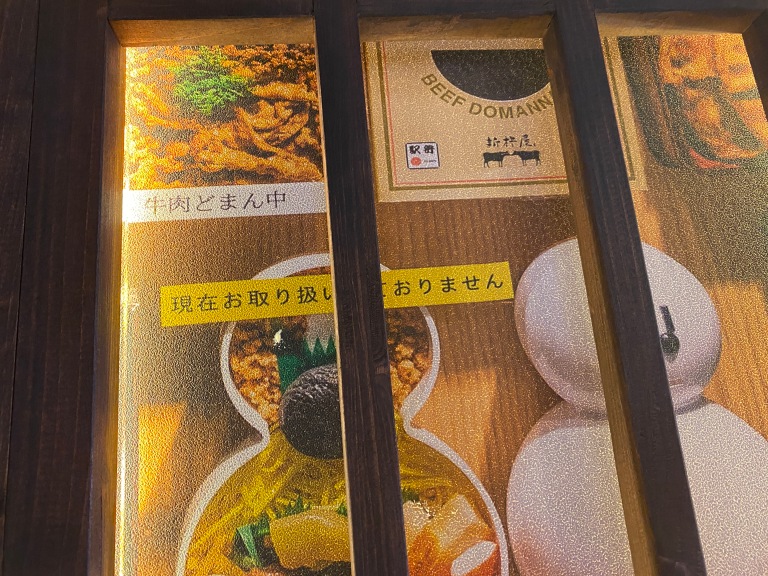
Though there were some misspellings and some questionable signage–and a lot of misleading food signs–the restaurant clearly put a great deal of effort into making it feel like you’d stepped into a Japanese yokocho alleyway, which really touched Ikuna!
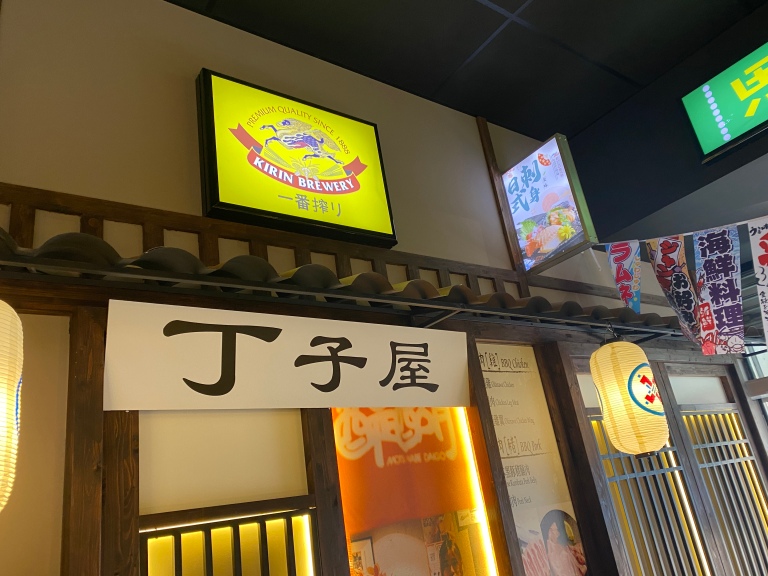
So, how about the food? Lunch was 11.95 euros (about 1,552 yen or US$13.86) and included a drink, a side, ramen, and a dessert. Ikuna settled on karaage as her side.
▼ The paper sleeve for the disposable chopsticks had “Good appetite” written on them in Japanese. Ikuna couldn’t really find any fault with that.
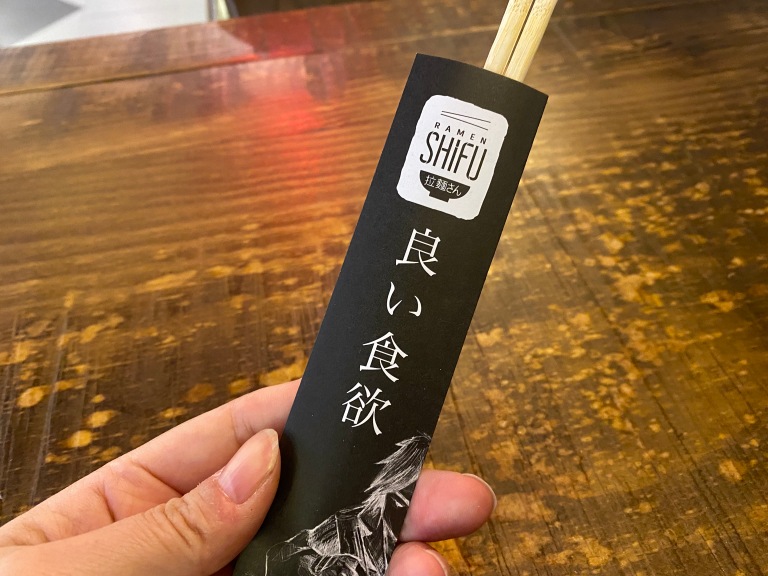
The karaage was decent. It felt like the kind you might find in the frozen section of a Japanese supermarket; not the best, but definitely karaage.
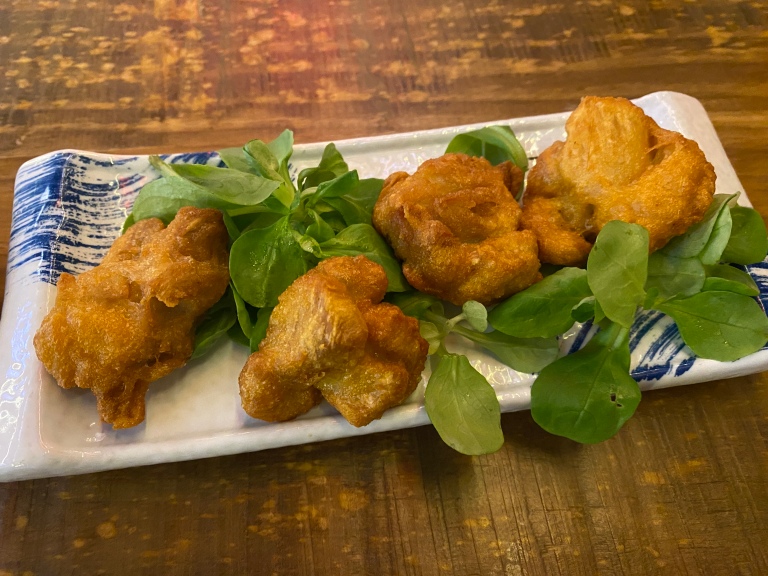
Ikuna’s order of Shoyu Ramen definitely fit the bill in terms of looks!

The noodles were not the best noodles Ikuna had ever tasted, and the soup wasn’t exactly as piping hot as she liked it, but she didn’t mind too much. Since this was Spanish ramen, there wasn’t much point in comparing them to a ramen shop in Japan. She was just happy to get to eat it!
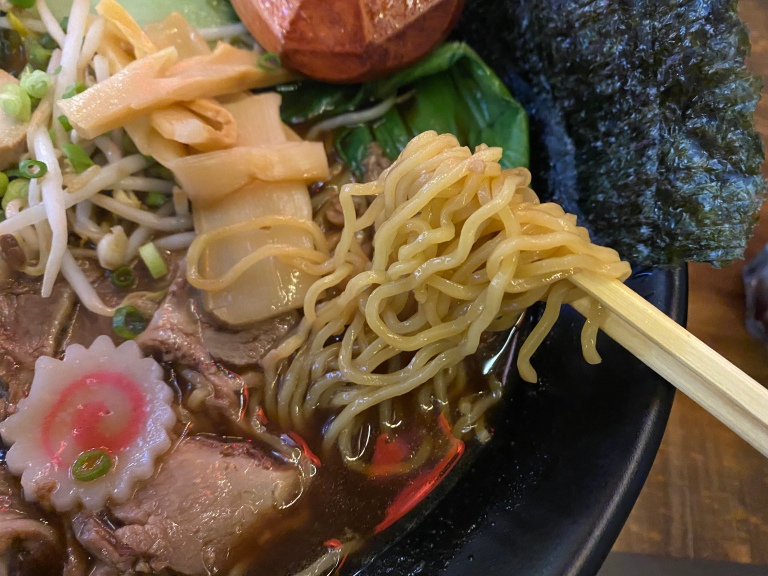
The chashu, however, was a real winner. It was even better than some that she’d eaten in Japan. It was juicy and soft and really delicious.
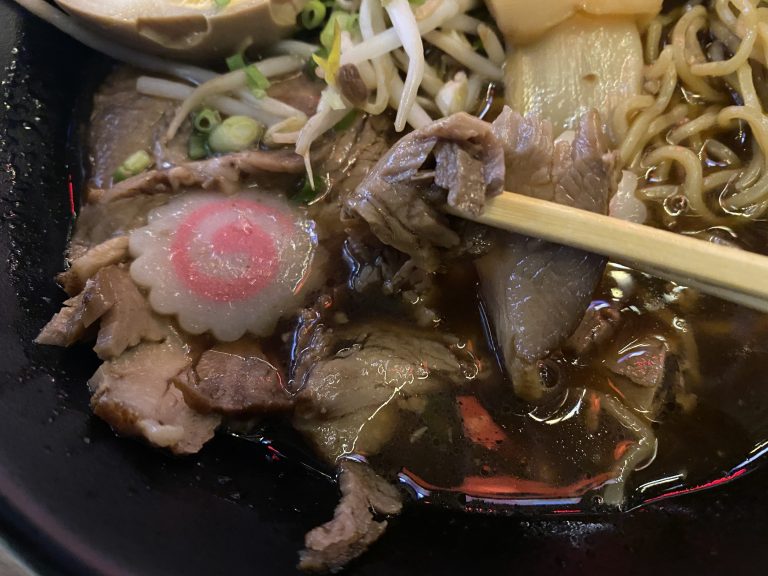
Once she’d downed that, her dessert arrived: a jumbo-sized coconut mango jelly with tapioca balls.
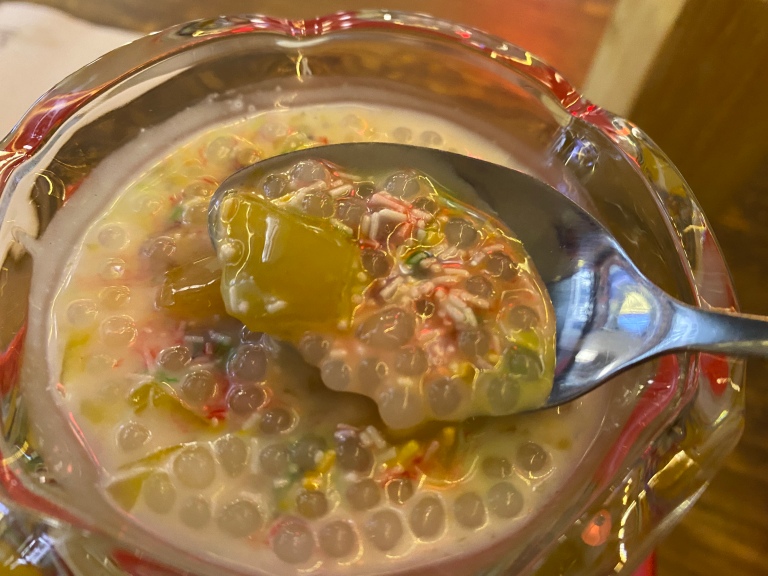
All that, plus a beer, for 1,552 yen might make this an even cheaper ramen meal than in Japan. Plus, the restaurant had the added bonus of playing an endless stream of Japanese idol music, which many Japanese otaku would appreciate. Using the song-identifying app Shazam, Ikuna was able to discover they were playing music by artists like Necopla, KATACOTO *BANK, Planck Stars, and SOL, all female idol groups. It felt a bit like eating in a ramen shop in Akihabara, which was not a unpleasant realization.
2. Muginoya in Barcelona
Muginoya, located in a quiet spot just a bit outside of the city center of Barcelona, serves not only ramen but also Japanese favorites like katsudon, unagidon (eel over rice), fried rice, yakisoba, grilled chicken, and even agedashi tofu (deep fried tofu in dashi sauce). It felt more like an izakaya bar than a ramen shop.
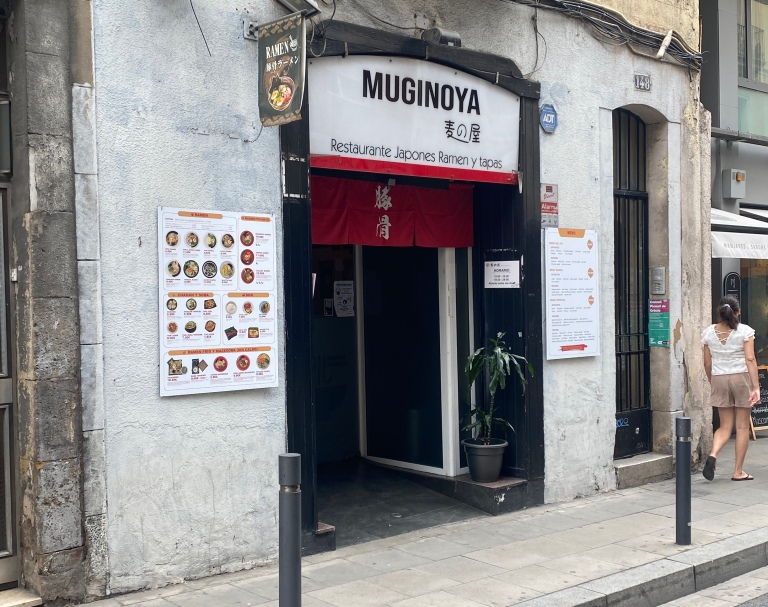
The interior had a very retro, Showa-style vibe.
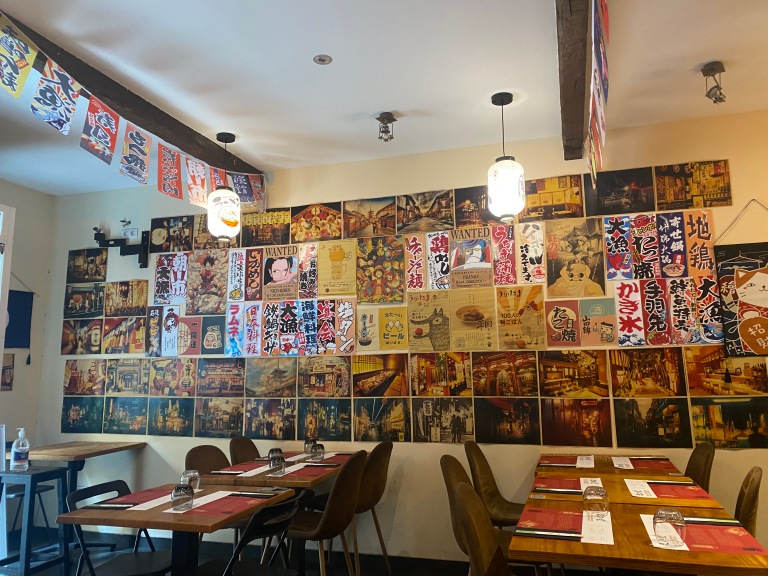
It was also decorated with anime posters as well as banners for food items that weren’t on the menu.
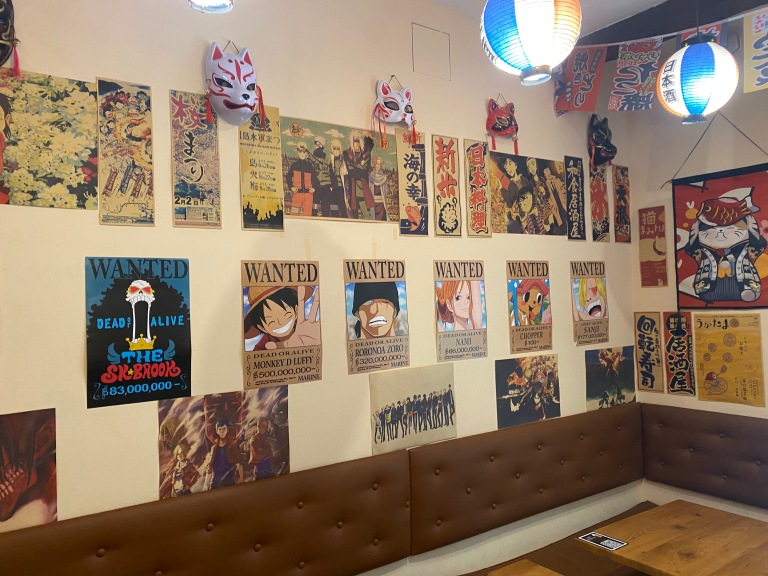
They had plenty of Japanese sake, which was definitely a plus in Ikuna’s eyes!
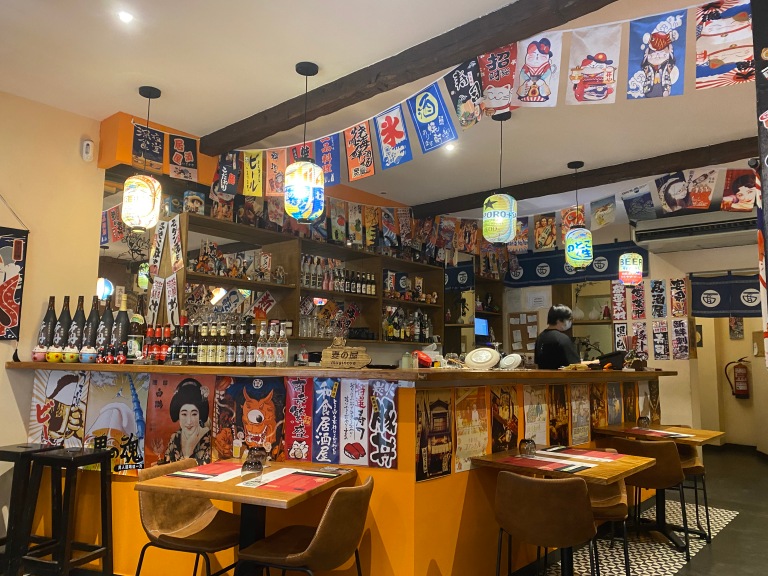
The restaurant offered a ramen set for 10.50 euros, which included a drink and a side. The list of sides was pretty impressive and included rice balls, spring rolls, gyoza, takoyaki, croquettes, and teriyaki chicken.
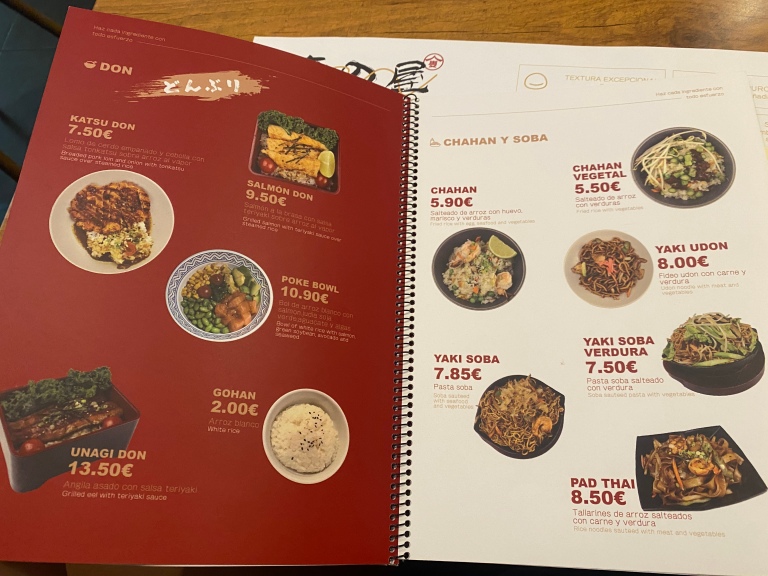
Ikuna was missing Japanese rice, so without a single hesitation, she ordered the rice ball.
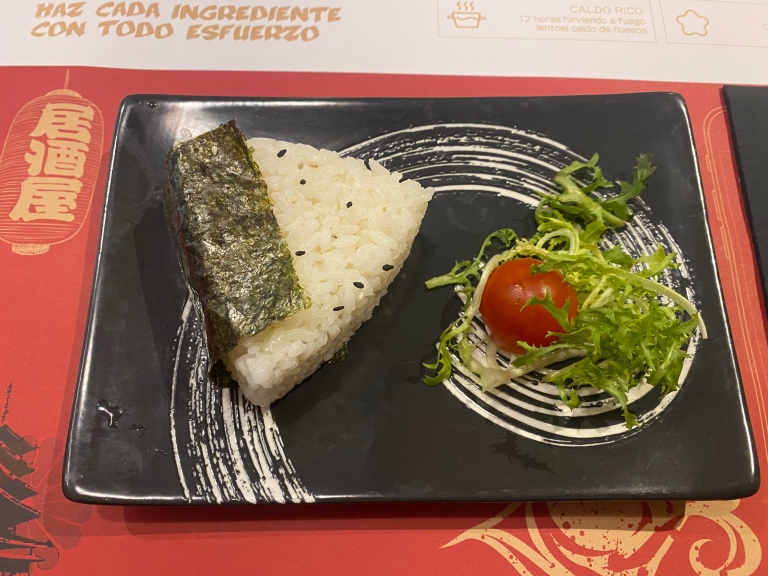
Though she would have preferred a plain rice ball, it actually turned out to be a tuna mayo onigiri–which wasn’t terrible on its own, but the rice had a bit too strong of a vinegary flavor, as if they’d used sushi rice to make it.
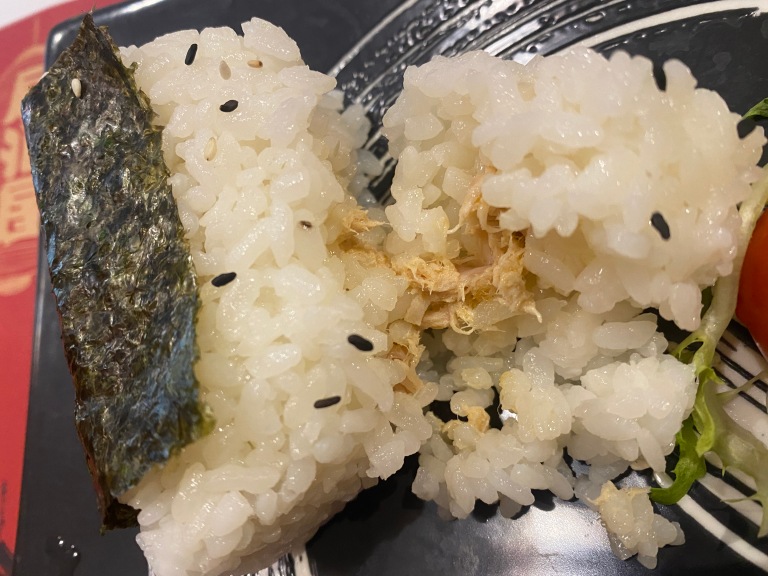
Ikuna also ordered the Tonkotsu Ramen advertised on a signboard in the restaurant. It looked really good!!
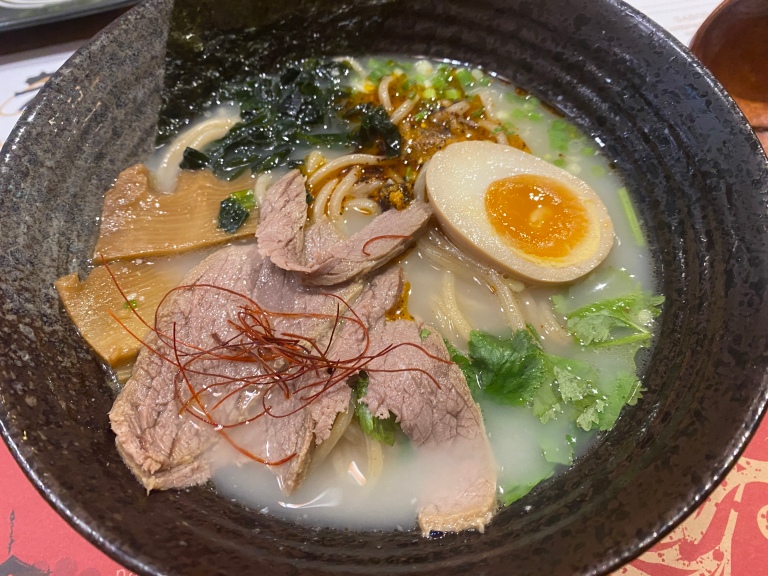
The flavors, however, were obviously not inspired by Japanese cuisine. The chashu pork had a strong flavor of star anise and the broth had an unexpected kick to it. It was also topped with cilantro! But though it wasn’t typical tonkotsu ramen by any means, it was still really tasty. It was definitely something Ikuna would come back to eat again!
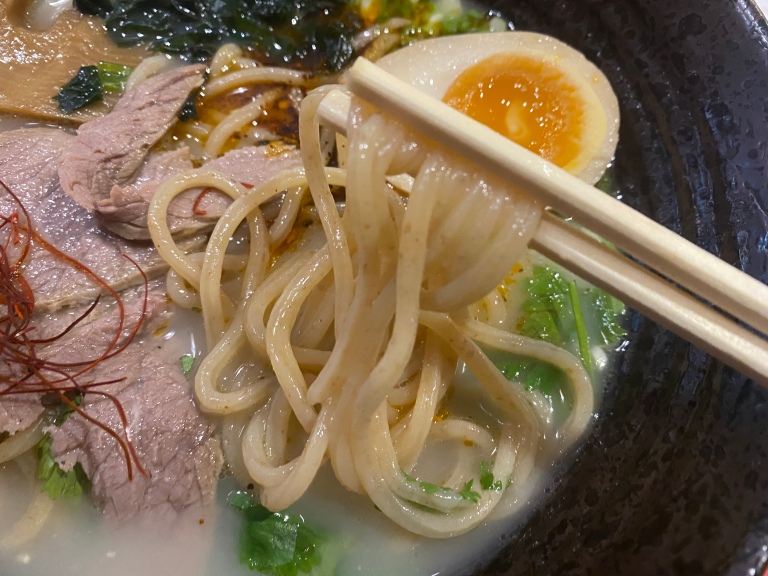
By the way, the music in this restaurant was old-school-style Japanese pop, featuring artists like Class, Naotaro Momoyama, Southern All Stars, and Sukima Switch. They were all nostalgic songs to Ikuna, which made her feel like she was at home in an izakaya in Tokyo.
3. Ra-men Kagura in Madrid
This ramen shop has four chains in the city of Madrid, and has over 10,000 reviews on Google. Even Ikuna’s homestay host, Diego, eats there often! Naturally, Ikuna had to check out a restaurant that received such ardent support from its patrons.

Ikuna arrived just 10 minutes after the restaurant opened, but half the seats were already full. By the time she left, a line had formed. It’s certainly a popular spot!
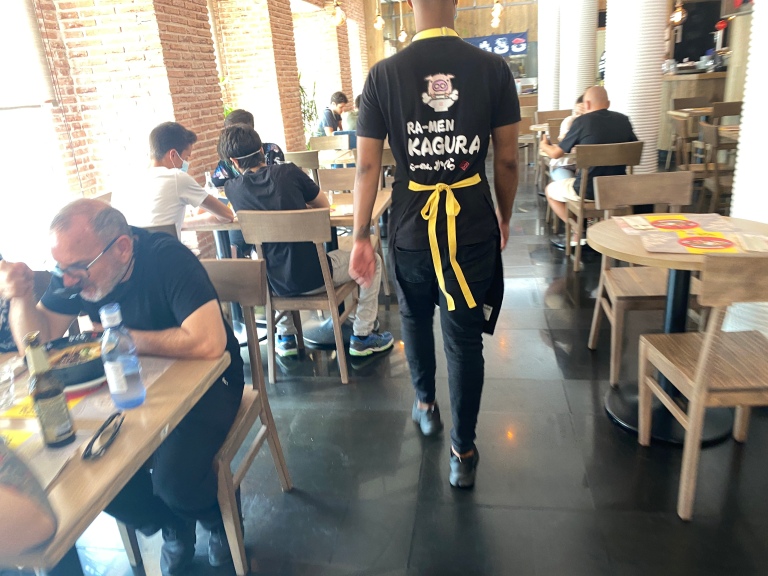
The interior of the shop was very subdued, especially compared to the others. It actually had a really realxed atmosphere.
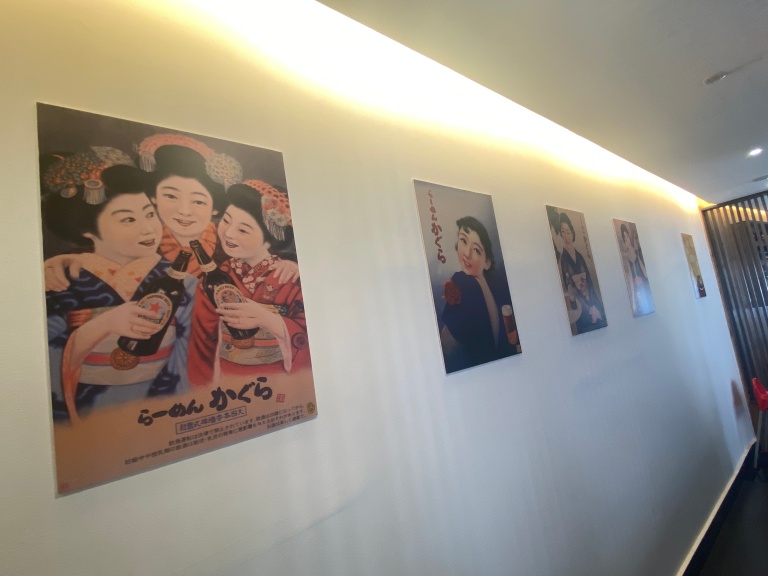
It had just the right amount of Japanese touches.
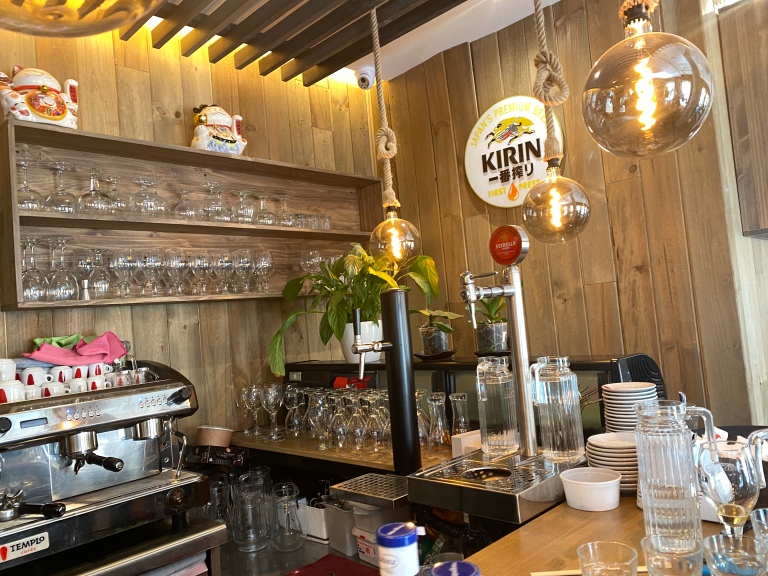
Some of their most popular food is actually not ramen but their karaage set meal and their curry. Ikuna also noticed that a lot of the customers around her were ordering the takoyaki, which she found interesting.
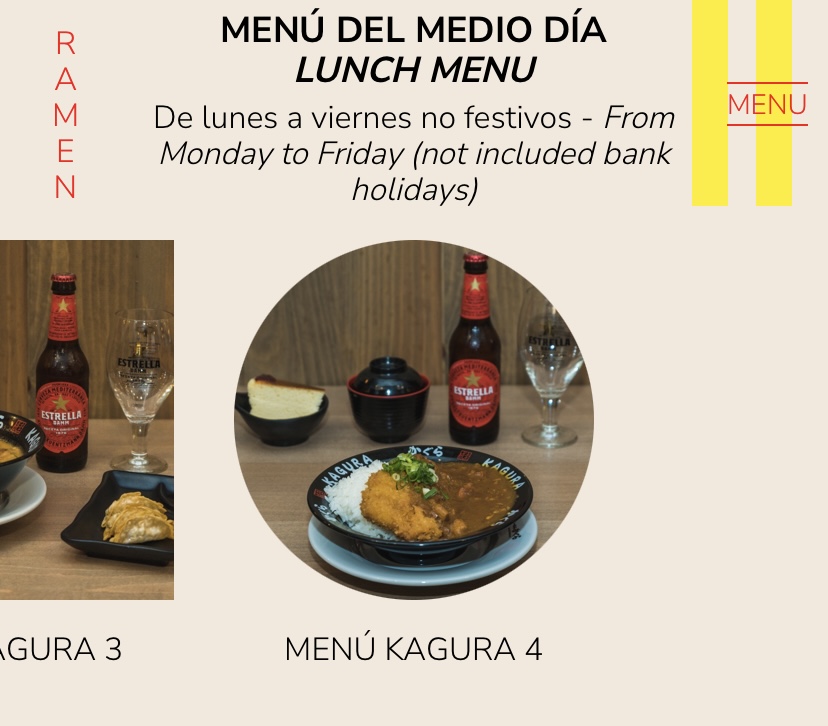
But Ikuna had come for ramen, so she ordered the Tonkotsu Miso Ramen, which came as a set with a drink for 10.50 euros. And it was…

Really insanely good!
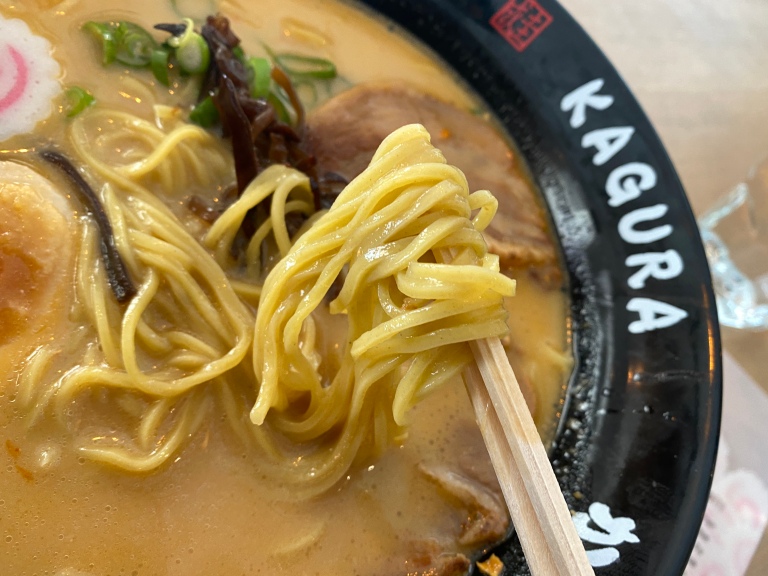
The flavors were completely Japanese and super authentic.
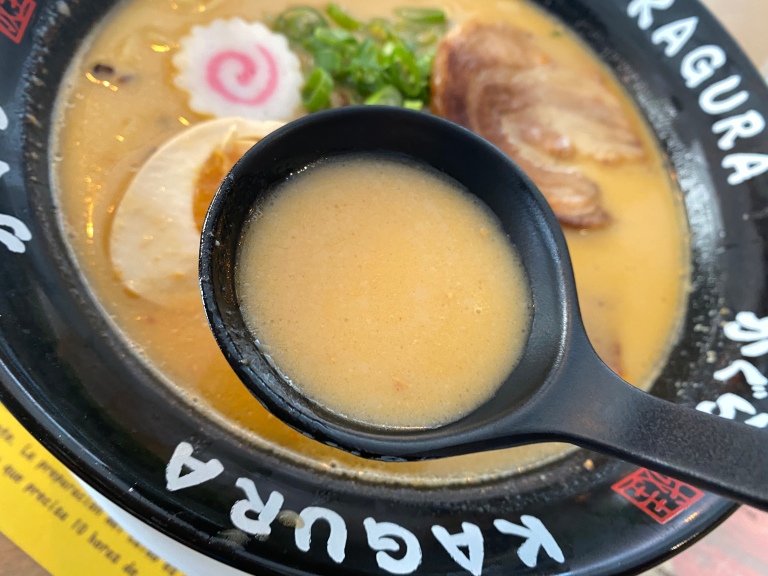
The chashu pork and boiled egg were particularly good quality, just as good as the best quality you’d find in Japan.
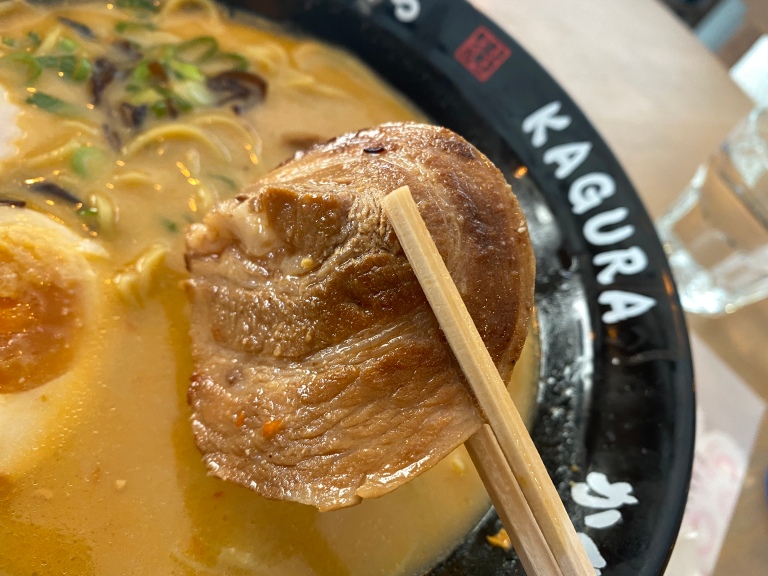
If the food at Ramen Kagura is this good, Ikuna thought she could live in Spain forever without missing Japanese food at all. Plus, the music was particularly good, featuring a nice mixture of J-pop hit songs from the ’90s up until today, including Mika Nakashima, Yumi Matsutoya, Mayo Okamoto, and Hana*Hana, which made Ikuna feel like she really was home.
Though some things were a bit strange for her, Ikuna will, as always, continue on her quest to find the best Japanese food wherever she is, whether that be Spain, India, Paris, or wherever else. Whether it’s in the form of the atmosphere, the decorations, the food, or the music, there’s always enough to cure her of homesickness in some way or another!
Images © SoraNews24
● Want to hear about SoraNews24’s latest articles as soon as they’re published? Follow us on Facebook and Twitter!
Credit:

0 comments: